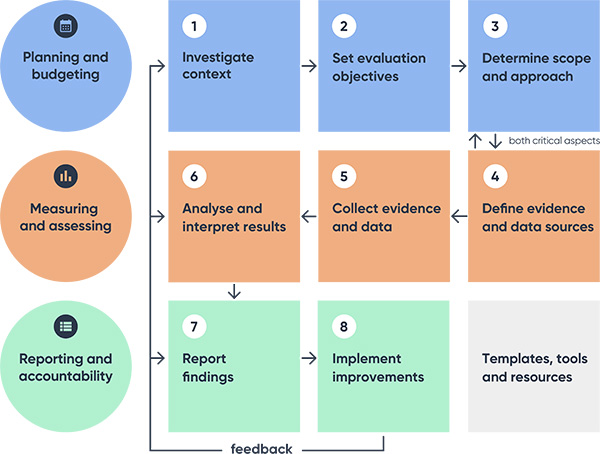On this page
This guidance is designed to support people to determine fit for purpose approaches to evaluate, measure and assess the performance of a Commonwealth program or activity.
It can be used to plan and conduct an evaluation, or to strengthen routine performance measurement approaches. The templates, tools and additional resources provide further guidance and examples on specific tasks.
While the "How to" section is presented as a series of sequential steps, in practice, evaluation and performance management need to be approached in a holistic way and considered early in the policy cycle.
Evaluation findings
Evaluation findings and other performance information should be used to support continuous improvement, accountability and decision‑making.
The steps below are not mutually exclusive – all aspects of planning, measuring, assessing, reporting and being accountable for results need to be considered together to determine fit for purpose evaluative approaches. This allows:
- robust performance monitoring to be established early in the policy cycle, and aligned to existing data, where possible
- credible data and evidence to be collected throughout implementation to support future evaluations, reviews and performance assessments.
Evaluative steps
Before you get started, be aware that:
- Steps 1‑4 need to be considered before an evaluation begins
- Step 5 should continue from the start to the end of a program/activity
- Steps 6‑8 need to be considered early to ensure stakeholders get what they need from the evaluation


